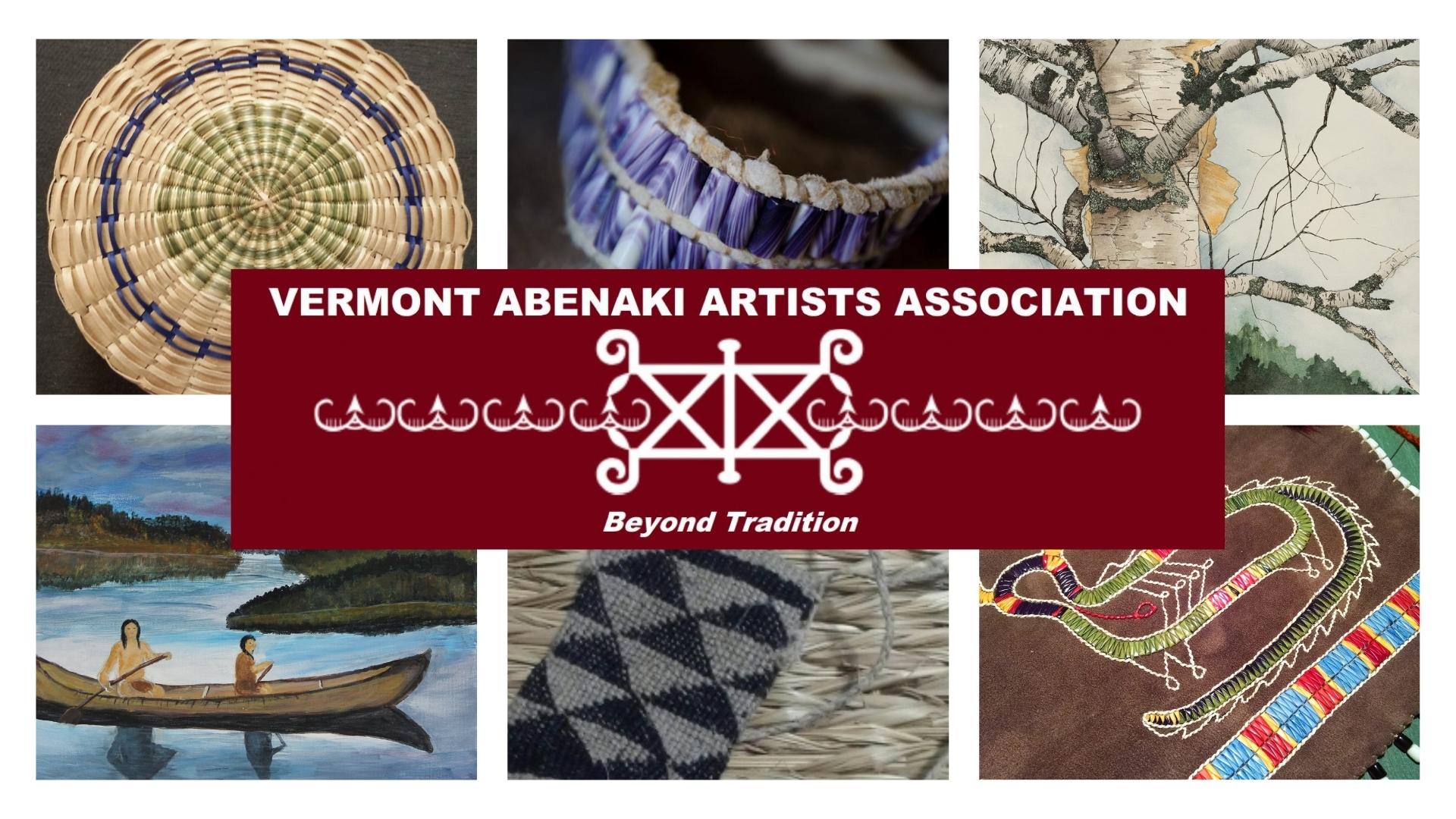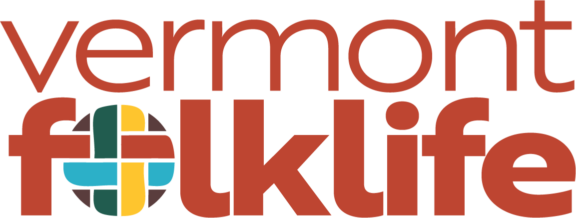Sherry Gould (Nulhegan Band of the Coosuk Abenaki Nation) and Vera Sheehan (Elnu Abenaki Tribe), are both lifelong artists and their apprenticeship structure is unique. They are both recognized in their communities as expert artists in different art forms. Sherry is a basket maker. In 2006 she became a juried basketmaker through the League of New Hampshire Craftsmen in 2006, being the first Native American artist in the league. Sherry and her husband, Bill, work to maintain basketmaking as part of Abenaki culture through teaching other Abenaki people through traditional arts programs in New Hampshire and Vermont. Sherry is also a state representative in New Hampshire. Vera practices knotting: Abenaki textile weaving using natural fibers such as milkweed (also referred to as twining). She is also an educator and activist, the Director of the Vermont Abenaki Artists Association, and the Founder of the Abenaki Arts & Education Center, and previously a Museum Educator and the Smithsonian National Museum of the American Indian.
Click here to read the full article on the Vermont Folklife website and listen to recordings by Sherry and Verabasketmaking
Kerry R. Wood
Enrolled Citizen of the Nulhegan Band of the Coosuk Abenaki Nation
Juried Artist since 2016

Kerry Wood/Kalli Abazi is a citizen of the Nulhegan Band of the Coosuk Abenaki Nation. In 2016 she completed a 3 year apprenticeship program with Jeanne Brink through the Vermont Folklife Center Traditional Arts Apprenticeship Program for making traditional Black Ash and Sweetgrass baskets.
Elvine Obomsawin, Kerry’s Great-Grandmother, and her family made and sold baskets to tourists in Vermont in the early to mid-1900’s. Jeanne Brink is also Kerry’s cousin, and hearing the stories from their Obomsawin family heritage while learning basket making brought her past alive! When she is making baskets, she feels a deep connection with those who have gone before her, and is at peace and connected. Her husband helps prepare the ash by harvesting the ash trees and, with their son Aaron, pounds and splits the ash. The family works together to create the materials for baskets from the harvest of the tree to the final project.
Kerry has baskets on display at the Vermont Maritime Museum, The Abenaki display at the Burlington Airport, and at the Bennington Museum. Black Ash and baskets remain a critical aspect of Abenaki culture and heritage. They are part of Ndakinna, our land. Kerry teaches Abenaki people and others the history and craft of Abaznodaka as well as the language of the Abenaki people, Alnôbaôdwa, so the culture and heritage will continue. She is also collaborating with people across Vermont to help combat the impact of the Emerald Ash Borer, which threatens the very existence of the Black Ash trees. Basket making is part of the Abenaki soul and heritage, and it is critical to ensure it is never lost.
Contact
Email: [email protected]



Demonstrations (as an Apprentice with Master Basketmaker Jeanne Brink)
2016
- Dartmouth Powwow, Dartmouth College
- Native American Program, Dartmouth College
- Vermont History Exposition, Tunbridge, VT
2015
- Abenaki History Day, Hartford, VT
- Dartmouth Powwow, Dartmouth College, NH
- Native American Program, Dartmouth College, NH
- Saratoga Native American Festival, Saratoga, NY
2014
- Dartmouth Powwow, Dartmouth College, NH
- Native American Program, Dartmouth College, NH
- Vermont History Exposition, Tunbridge, VT
Awards
2013, 2014, 2015
- Traditional Arts Apprenticeship Program, Vermont Folk Life Center. Middlebury, VT
Affiliations
- Vermont Abenaki Artists Association
John Hunt
Enrolled Citizen of the Nulhegan Band of the Coosuk Abenaki Nation
Juried Artist since 2016

John Hunt grew up in the farm country of Vermont. When he was young, his father would tell him about his native heritage and about how their ancestors had lived. John enjoyed imaging how it was long, long ago as well as how his grandfathers lived more recently. He saw how life used to be made up of your own two hands. Whether it was tools needed for farming or hunting or things you would need around the house like bowls and baskets it all had to be made by someone’s skilled hands.
This inspired John to have a relationship to life like his family had always had. To know how to make what he needed from the land around him. When he looked back at many of the tools of our ancestors, he saw they were created not only to be functional but beautiful as well. He was inspired by that way of being and has chosen to live his life in that way. Though he has tried and practiced many art forms, he has focused most on carving, basketry, and pyrography.
ARTIST STATEMENT
I have been creating art since I was a child, but since the age of 18, it has become a very strong focus in my life. Though I have never had one primary teacher, I have learned through many people over the years as well as through my own personal practice.
Carving: For my carving, I use many types of wood. For kitchen utensils, I like to use a hardwood like black walnut,

black cherry, apple, maple, etc. and for more figure/ sculpture carving I use soft woods like white pine or cedar.
Basketmaking: My family members were basket makers that sold their wares around northern VT. However, there is no longer anyone in my direct family practicing this art, so I have sought out many different teachers over the years. Though I haven’t formally studied with anyone, I have spent time with many different basket makers around Vermont. I primarily make bark and willow baskets. For the willow, I gather from a few locations by my home that grows nice long rods, and I tend these patches. For my bark baskets, I prefer pine, and I keep my eye out for trees that have fallen over during the winter and peel their bark in the spring.
To create my art, I use modern hand tools. However, I gather all of my materials from the natural world. My art is an expressive outlet for me and a connection to my ancestors. I really enjoy making things that have a function as a spoon but going beyond function and giving it a unique beauty. I find inspiration for my crafts in nature around me. I try to have my crafts showcase and lead to the innate majesty of the plants, animals, and elements.
Pyrography: Over the last several years, I have studied traditional Wabanaki designs and the images I see in nature. From these studies, I create my designs. I grow the gourds that I use and gather soft woods for my pyrography.



Contact Info
Email: [email protected]
MUSEUMS AND EXHIBITS
Currently
Part of the permanent collection of Abenaki Cultural items at the Burlington International Airport, Vermont.
2017
Alnobak: Wearing Our Heritage. Traveling Exhibit. Lake Champlain Maritime Museum
AFFILIATIONS
Vermont Abenaki Artists Association

